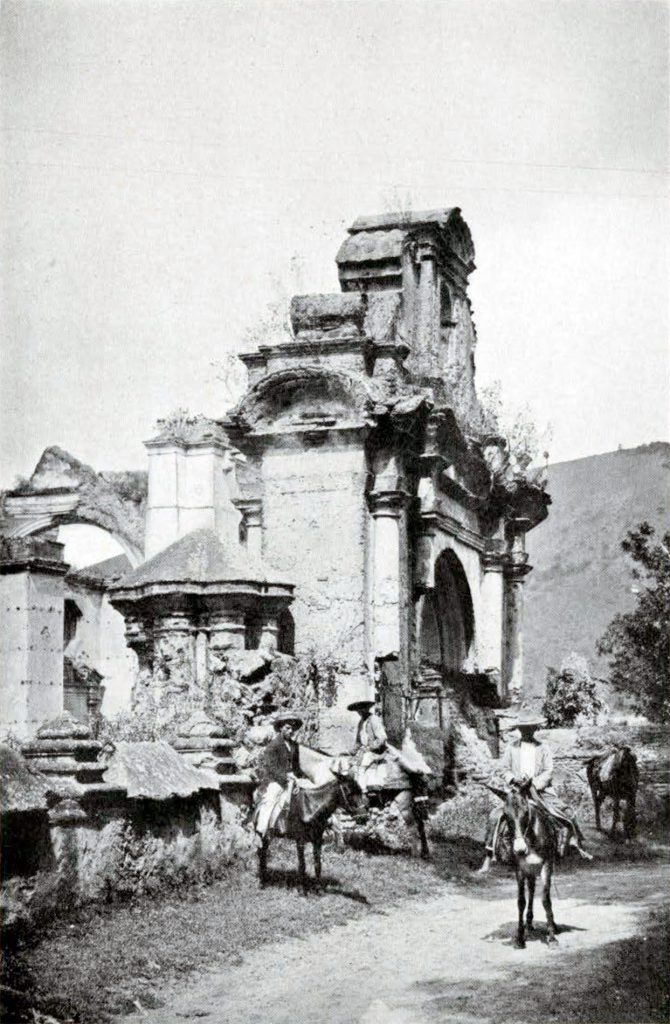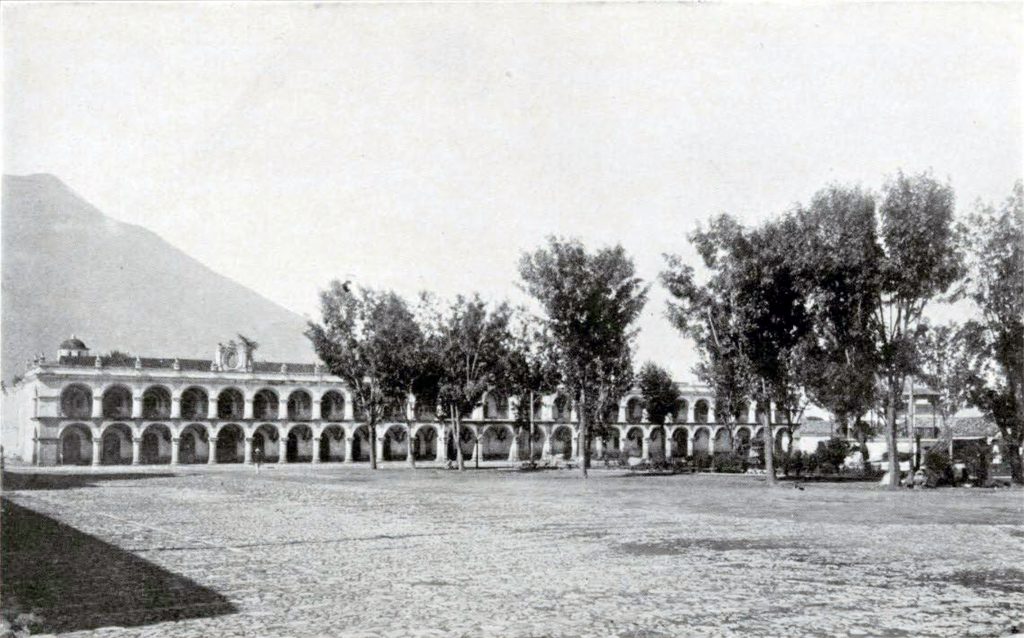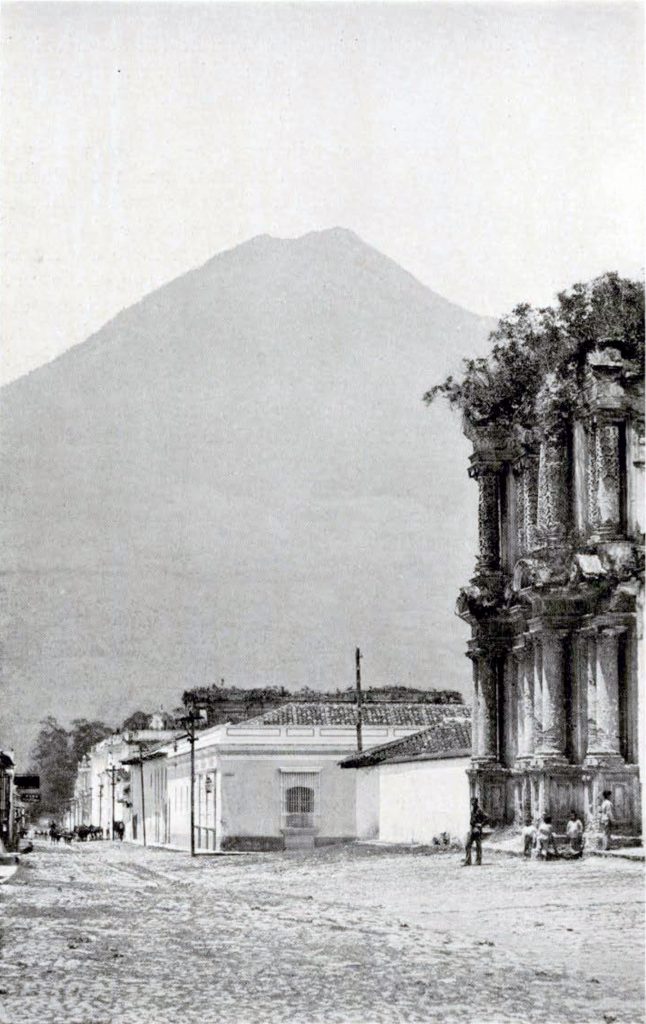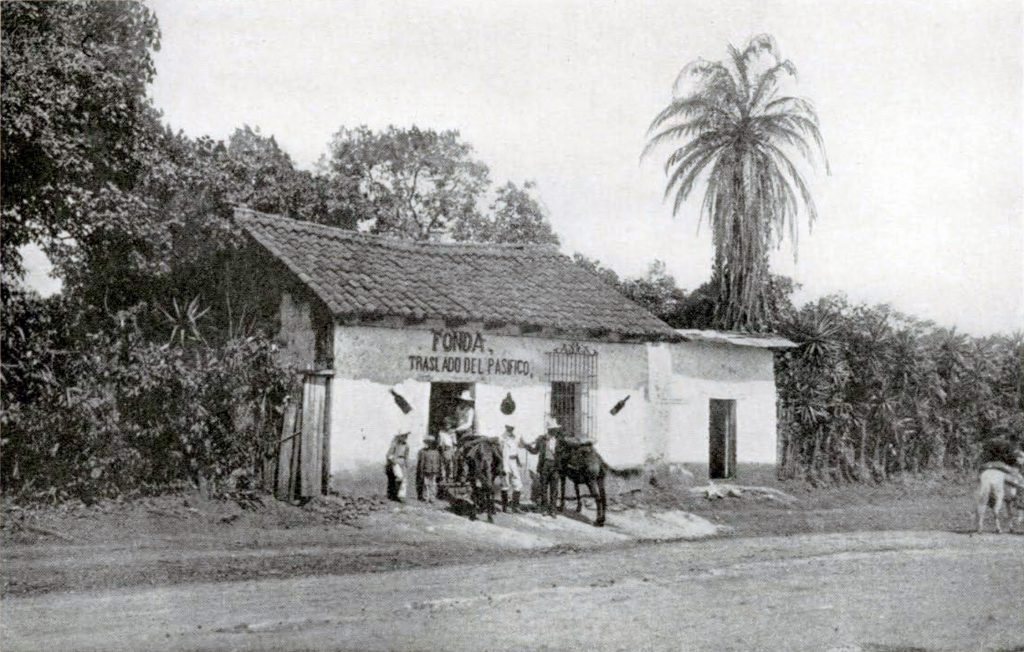(THE MOON)
There was a great cacique in the land and he had a beautiful daughter. He loved her so much that he would never allow the sun to shine on her. When the sun heard this, he was so angry that he decided to steal the girl and make her his wife.

When the cacique went to the forest to shoot wood pigeons with his blowgun, the sun borrowed the turtle’s shell and held it in front of his face in such a way that it cast a shadow. While the girl was sitting in this pleasant shade, the sun threw the shell over her and sent one of his rays down to fetch her.
When the cacique came home he was so angry at the loss of his daughter that he decided to shoot the sun. The best gun maker was ordered to make the biggest and the finest blowgun ever seen. So he went to the pubché tree, which grows like the bamboo, and cut off the largest stalk. He worked so diligently that he had all the pulp out of this stalk before the boys he had sent to bring the bark of the sandpaper tree returned. Then he rubbed the gun most carefully with the bark of the sandpaper tree. The gun maker could not do all this work by himself, because it was a great big gun and he had many people to help him. After the gun had been rubbed until it was perfectly smooth inside and out, it was laid away to season. All this time the shot makers were busy forming great balls of clay and putting them to dry, while the cacique was just as busy saving all the breath he could to send one of those balls through the long straight tube of the blowgun clear to the sun.
At last the gun maker pronounced the gun ready. Then the weavers wove a network of bark around it. The rope makers tied thick ropes made of vines to this network, and the strongest men took hold of these ropes, and pulled, and hauled, until the mouth of the great gun rested on the top of the highest mountain in the land.
When the shot maker put the hard round ball of clay in the gun, the cacique came from his palace, puffed out with saved-up breath. Just as he put his lips to the gun and drew a deep breath to send the ball forth, the sun threw a handful of red pepper into the muzzle of the gun which made the cacique cough, and he coughed and coughed until all his admiring subjects coughed too, and this is how whooping cough came to Guatemala.
As soon as the cacique got well he said, “Now indeed, my faithful subjects, shall we shoot the sun.” Of course the sun threw more red pepper into the muzzle of the gun, but this time the cacique did not cough, for you know one may have whooping cough only once in a lifetime. So instead of coughing as before he sent the ball forth and it struck the sun so hard that he dropped the girl, but she didn’t fall at her father’s feet. She fell into the sea, miles and miles away and broke into many pieces. Each little piece of her mourned and cried for the beloved sun in such a distressing manner that all the tiny silver-scaled fish felt sorry; so they went to work and gathered up all the little pieces and patched the poor girl together as best they could. They were such kind-hearted little fish that each one put some of his silver scales over his own particular pitch. Then these good little fish gathered around the girl and tried to lift her up to the sun, but they couldn’t do so, until one of them said, ” Let each of us take his neighbor’s tail in his mouth and form a long rope of which we can weave a mat.” The great shiny mat swam under the girl and gave a big jump up to the sky. The heat of the sun was so great, his light so strong, that the little fish could not take the girl right to him as they wished, but they stuck her up in the sky and were hurrying home when they lost their way and had to stay up there too. Any clear night if you look up at the sky you can see them, for they form the great white streak [the milky way]. Now these little fish didn’t do what they started out to do—that is, take the girl back to the sun—but they did the very best they could and so we have the silver moon to shine at night. For the girl and the moon are one and she continually follows the sun and no doubt still hopes to overtake him some day. Have you never noticed that she sometimes nearly catches up with him and they go down in the west almost together? The sun may really want to wait for the moon, but no matter how much he wants to wait he is not going to, for he knows that if he loitered he might not be on time in the morning to wake the birds.

LI POO
(THE MOON)
ONE day the sun (Li Cagua Saque) fell in love with the daughter of a great man (Hun Nim Li Cagua) and in order to get possession of her he transformed himself into a humming bird (Pap Zunun) and flew among the flowers of the tobacco plants that grew about her father’s door. Soon the girl, whose name was Matactin, observed the bird and begged her father to shoot it for her. So he brought his blowgun and shot the bird with a ball, of clay and it fell to the ground as if dead, but great was Li Nim Cagua’s surprise when he picked it up to find that it was not even wounded. Matactin greatly admired the bird, and her father, yielding at last to her entreaties, gave it to her. It sat for a while on her outstretched finger and then walked up her arm to her shoulder, where it began caressing her.

Towards evening, when the girl was alone in the house, her father having gone out, the humming bird suddenly disappeared and the sun stood in its place. “Thou art mine and must ever follow me,” he cried, caressing Matactin in a manner that filled her with fear. “I cannot go with thee,” she answered trembling, “for the anger of my father would be more than I could bear.” “Fear him not!” exclaimed the sun, continuing to caress her, “for I shall take thee to a place where he cannot find us.” “It matters not where we go,” declared the girl, “he can see us with his far-seeing glass and shoot us with his great blowgun.” “Show me the far-seeing glass and the great blowgun,” demanded the sun, and when Matactin led him to where they were, he blacked the glass with smoke, put powdered chile into the blowgun, and went away taking his beloved with him.
When Li Nim Cagua returned, not finding his daughter, he cried, “To be sure, the humming bird was some ardent lover come in that form to woo her and he has won her and taken her away.” Then his anger was great and he went in search of his glass. Great was his surprise when he could not see with it, but he soon discovered the reason, and freeing it from smoke, he looked and saw Matactin and Li Cagua Saque, her lover, down by the sea. His anger now knew no bounds and he hastily took up his blowgun to shoot them, but no sooner did he put it to his lips than he fell down writhing with pain because of the chile that entered his lungs, He coughed and continued to cough, for he had whooping cough and all the people about him coughed.
As soon as the great man was better he again took up his gun to shoot the lovers, but just as he was about to send the ball forth, the lightning (Cagua Kauc) appeared to him and offered to kill them.
But the sun heard this talk, so he came with the girl from the sky again to the edge of the sea at a spot where there was a turtle (Kuk). “Give me here thy shell,” demanded the sun of the turtle. “I cannot do so,” replied the turtle, “because my shell is useful to me, and,” he continued, “may you not forget to return it to me?” “I shall give it back to thee when I no longer need it,” angrily replied the sun, and drawing near the turtle he took off its shell and putting himself into it disappeared in the deep sea. At the same moment the lightning struck Matactin and she fell dead, bathed in blood. Soon Li Cagua Saque came up out of the deep water and returned the turtle his shell. Then seeing the rich red blood of his beloved mingling with the water of the ocean, he ordered the dragon flies to gather it up and put it in thirteen tinajas (water jars). Then he commanded the masons to make a big fountain and disappeared, but at the end of thirteen days he returned and seeing the fountain completed he poured the first tinaja of Matactin’s blood therein, and there came forth from the fountain the terrible snakes called icbolay. When he threw the contents of the second tinaja into the fountain, swarms of the chupil, a poisonous worm, crawled out. The blood of the third tinaja called into being great hordes of the snake called bacuel. The blood of the other nine tinajas when poured into the fountain likewise produced horrible reptiles, but when the contents of the thirteenth tinaja fell into the fountain Matactin came forth in all her youth and beauty. Thereupon Li Cagua Saque called a stag and commanded him to conduct her to the sky.


